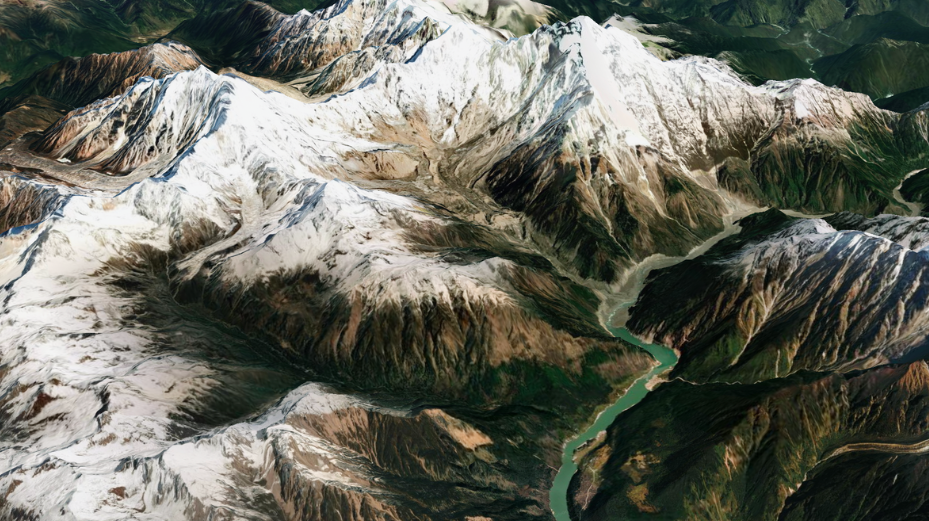Mass Wasting in Sedongpu Gully of Tibet (GS Paper 1, Geography)

Why in News?
- Recent research published in the Journal of Rock Mechanics and Geotechnical Engineering has drawn attention to a troubling increase in mass wasting events in Sedongpu Gully, Tibet.
- This rise, observed since 2017, has significant implications for India's northeastern states due to the proximity of the region and its river systems.
Key Highlights of the Study
Increased Frequency of Mass Wasting Events
- Observations: The study identifies a marked increase in mass wasting incidents in Sedongpu Gully from 2017 onwards. Using satellite data from 1969 to 2023, researchers recorded 19 major events, including ice-rock avalanches, ice-moraine avalanches, and glacier debris flows. Notably, 68.4% of these events occurred after 2017.
- Debris Mobilization: Since 2017, over 700 million cubic meters of debris have been displaced in the Sedongpu Gully catchment, affecting downstream river systems.
Historical Context
- Past Events: The earliest recorded mass wasting event in Sedongpu Gully dates back to 1974-75, with increased activity noted from 1987.
Causes of Increased Activity
- Climate Warming: Long-term warming trends have contributed to increased mass wasting. The region’s temperature has risen at a rate of 0.34º to 0.36º C annually between 1981 and 2018, surpassing the global average increase.
- Seismic Activity: Increased seismic activity in the region is also a significant factor.
Impact on the Tsangpo River
- Blockages: Debris from mass wasting has periodically blocked the Tsangpo River, leading to concerns about potential flash floods downstream in Arunachal Pradesh and Assam. Similar blockages previously caused catastrophic floods in these regions in 2000.
Sedongpu Gully: Geographical and Environmental Overview
Location and Features
- Sedongpu Gully: Situated in the catchment area of the Sedongpu Glacier in Tibet, the gully drains into the Yarlung Zangbo (Tsangpo River). The Tsangpo flows around the Great Bend, one of the deepest gorges on Earth, before continuing into India as the Siang River and eventually joining the Brahmaputra in Assam.
Mass Wasting Definition
- Overview: Mass wasting refers to the downhill movement of rock, soil, and debris under gravity. It includes various events such as rock falls, landslides, debris flows, and avalanches.
Types of Mass Wasting Events
- Rock Fall: Sudden falls of rock debris.
- Landslides and Rock Slides: Large soil and rock movements.
- Debris Flows: Rapid, water-saturated flows resembling wet cement.
- Avalanche: Sudden movements of rock or ice.
- Slope Creep: Gradual soil and rock movement.
Impact of Mass Wasting in Tibet on India and Bangladesh
Downstream Effects
- Sedimentation: Increased sediment from mass wasting affects the Tsangpo River and its tributaries, potentially exacerbating sedimentation in the Brahmaputra River system.
- Hydropower Projects: China’s planned 60-gigawatt project on the Tsangpo could be impacted by increased sedimentation and seismic activity in the region.
Flooding and Navigation Issues
- Brahmaputra River: The river carries significant sediment loads, which can cause flood hazards and navigation challenges. Sediment buildup can elevate riverbeds, leading to more frequent flooding and difficulties in navigation.
Way Forward
Ongoing Monitoring and Research
- Geophysical Monitoring: Continuous monitoring of mass wasting events is crucial for managing sedimentation and assessing impacts on the Brahmaputra River system.
- Research Needs: Further research is required to understand trends and develop strategies for mitigating the effects of mass wasting.
Environmental and Disaster Management Measures
- Reforestation and Afforestation: These efforts can stabilize slopes and reduce erosion.
- Sustainable Land Use: Implement land use planning to avoid development in high-risk areas.
- Erosion Control: Employ measures such as terraces, check dams, and gabions to prevent erosion and reduce mass wasting risks.
- Disaster Risk Assessments: Regular assessments can help identify vulnerable areas and prioritize mitigation strategies.
Conclusion
- The increase in mass wasting events in Sedongpu Gully has significant implications for both the local and regional environment.
- The disruption caused by these events, combined with rising temperatures and seismic activity, highlights the need for robust monitoring and disaster management strategies.
- Addressing these challenges will require coordinated efforts in environmental management, sustainable land use, and international cooperation to mitigate the broader impacts on the Tsangpo-Brahmaputra river system and its downstream communities.


